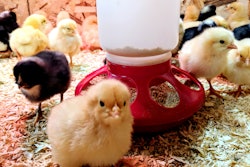
Maple Leaf Foods saw improved financial results on a year-over-year basis during the second quarter, despite challenges brought on by the COVID-19 pandemic.
“To say the second quarter saw unprecedented volatility is quite the understatement,” Maple Leaf Foods Chief Financial Officer Geert Verellen said during a call with shareholders on July 30.
For the second quarter, which ended June 30, Maple Leaf Foods recorded net earnings of CA$25.7 million (US$19.1 million), compared to a net loss of CA$6.3 million for the second quarter of 2019.
The diversified protein company also saw its quarterly sales increase 7% to CA$1.09 billion in the second quarter. Its meat protein group’s sales increased 5.8%, driven by increases in hogs processed, higher sales to Asian markets, a favorable mix shift and the impact of foreign exchange. The plant protein group saw a sales growth of 41.4%, due to higher volumes across its portfolio.
Despite those improvements, Verellen discussed three areas that impacted the Canadian company’s finances during the COVID-19 pandemic. Those three areas are:
1. Poultry markets
“A structural oversupply in the market predating the pandemic just got worse by the collapse of the foodservice business,” said Verellen. “Production disruptions in some of our poultry plants directly related to the pandemic, further put pressure on us to satisfy the high demand coming from our regional customers.”
When asked by one analyst about whether the present poultry market dynamics have improved, Curtis Frank, president and chief operating officer of Maple Leaf Foods, said the situation appears to be better.
“With markets today, things have started to show signs of correcting, and we expect over the back half of 2020 for things to normalize, and we’re already starting to see positive signs of a market correction,” Frank said.
2. Pork commodity markets
“We started the quarter with negligible packer margins only to see record levels my early May as wholesale prices rose and hog prices fell. It was quite the roller coaster,” said Verellen.
“Common wisdom would indicate that higher packer margins would benefit us considerably. However, in volatile markets like this, normal hedging programs cannot absorb this incredible volatility and become inefficient quite quickly, which we experienced.”
3. The pandemic itself
The need to keep Maple Leaf Foods plants operating and the supply chain moving while keeping its workers safe prompted the company to incur some costs it did not have during the second quarter of 2019.
Verellan said among those expenses were for additional personal protective equipment (PPE), intensified sanitation protocols, and the cost of overtime.
View our continuing coverage of the coronavirus/COVID-19 pandemic.

















